Keywords
Hepar; Hepatoscopy; Lives’ regeneration; Prometheus; Tityus; Abdominal surgery
Introduction
In Greek antiquity human and animal liver played an important role both in daily life and in divine-spiritual medicine. All terms used today, "hepatic", "hepatitis", "hepatoma", "hepatology", derive from the ancient Greek word "ήπαρ" (hepar=liver). Some scholars believe that the word was also spelled as "hedar", the same root of "hedon" (Greek: ηδονή, pleasure). Some ancient Greeks medico-philosophers believed that hepar was the centre of the soul, most probably driven by the understanding of its significant role for the human body to preserve its homeostasis [1-4]. Hippocrates (ca 460-370 BC) was the first physician to describe hepatitis, and to operate hepatic abscesses [5], while Aretaeus (ca 1st century BC, nor 4th century AD) was operating hepatic malignancies [6]. War surgery could have been also provided information for human liver and its anatomy. Furthermore, animal dissections, human autopsies (although strictly ethical prohibited), and the use of slaves and convicts as laboratory subjects, could imply a level of knowledge in liver’s physiology [7-10].
The well known myth for the punishment of the ancient Greek god Prometheus (Figure 1) and the neglected and most probably older myth with the same punishment for Tityus (Figure 2), both narrate creatures penalized to suffer internally as their liver was being devoured by carnivore birds with large wings and then had been healing. The punishment was perennial in its nature, implying that the ancient Greeks recognized liver’s ability to regenerate. The endless punishment is provoking a perpetual question, "Had really the ancient Greeks had some knowledge of hepatic regeneration?” Our quest aims both to gather all available information on liver’s anatomy and physiology in ancient Greece (-the reality), and to analyse the myths of Tityus and Prometheus (-the mythology), to communicate a verdict upon the question of post mortem observation, or a remark after surgery, or simply a fiction for the hepar’s regeneration. The study was realized by making a search in medical literature saved inside TLG (Thesaurus Linguae, Greece), using as search terms the Greek words "ήπαρ" (hepar), "ίκτερος" (jaundice) "ΠρομηθÃŽÂÂÂας" (Prometheus), and "Τίτυος" (Tityus).
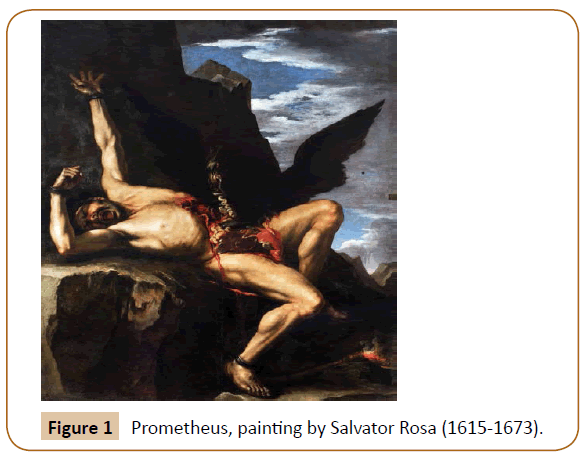
Figure 1: Prometheus, painting by Salvator Rosa (1615-1673).
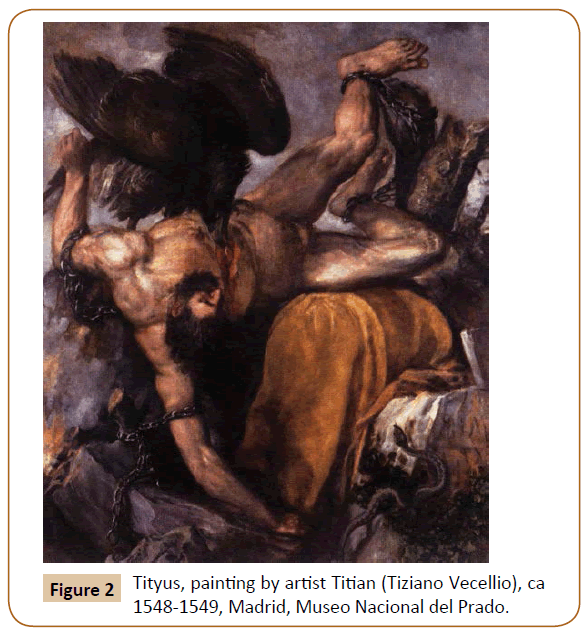
Figure 2: Tityus, painting by artist Titian (Tiziano Vecellio), ca 1548-1549, Madrid, Museo Nacional del Prado.
Promethean and Titian myths
Prometheus’ myth (Figure 3) suggests that the liver was noted as immortal, both for its prodigious recuperative powers, and for its capacity to seat the soul and intelligence of the mortal human beings. According to Hesiod (8th century BC) and Aeschylus (5th century BC), Prometheus was a mythical gigantic creature, a Titan an ill-defined order of divine powerful figment coexistent with Zeus and the Olympians. It was Prometheus who advised Zeus to gain absolute power in the Olympian world to be the greatest god of all. Prometheus (Greek: ΠρομηθÃŽÂÂÂας, meaning he who gives all supplies to those in need) aided mankind by initiating him in the arts and science, triggering the initiation of the human civilization. On the other hand, Zeus wanted to destroy man for his gross impiety, in order to create another race. The two friends fell out to a tug of war over the issue of mankind’s welfare. In the end, gods and humans disputed during a feast and Zeus in anger revoked man’s privilege of using the fire. Prometheus stole the fire from Zeus safekeeping and gave it back to the mortal humans. For this, Zeus banished him to the mount Caucasus, punished to be chained while an eagle would devour his liver repeatedly day by day. Unfortunately Prometheus’ hepar had the ability every night to be recovered and regenerated, thus reserving an eternal soreness. Fortunately, after the thirteenth generation the famous Greek hero, Heracles (Greek: Ηρακλής), appeared to save Prometheus by slaying the carnivore bird. In time, Prometheus became an archetypal culture-demigod in Ancient Greece, the hero who sacrificed for mankind and its prosperity [11-13].
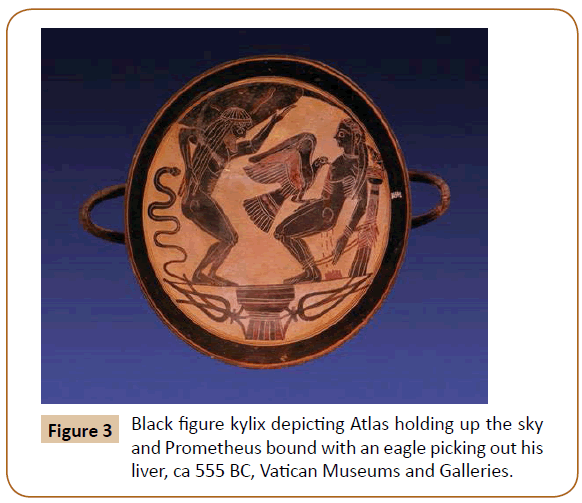
Figure 3: Black figure kylix depicting Atlas holding up the sky and Prometheus bound with an eagle picking out his liver, ca 555 BC, Vatican Museums and Galleries.
Tityus (Greek: ΤιτυÃÂÂÂÂŒς, from the ancient Greek root "Τίσις", tisis, meaning he who suffers retribution) (Figure 4) was a gigantic mythical creature in ancient Greece. For some mythography’s belonged to the species of "Gigantes" (Greek: Γίγαντες, giants), while for others in the species of "Titans" (Greek: Τιτάνες). When Elara, a mortal princess the daughter of King Orchomenus, was impregnated by Zeus, the god decided to hide the pregnant mother deep inside the Gaia (Greek: Γη, the manifestation of the earth as a goddess), so that his wife Hera (Greek: Ήρα) would not learn of his infidelity. There, Tityus was born, but because of his enormous proportions he was nursed by Gaia. It is said that he was as large as a 9 "plethros" surface (1 plethros ≈ 900 m2). Both his surrogate mother, Gaia, and his divine origin as a son of Zeus contributed to his special abilities, immortality and size. His eager for power lead him to forcibly occupy the ancient city of "Panopeas" (Greek: ΠανοπÃŽÂÂÂας) in Phocis. There he had assaulted the Olympian goddess Leto (Greek: ΛητÃÂÂÂÂŽ) in her way to reach the oracle in Delphi, attempting to rape her, possibly encouraged by Hera who wanted to revenge Zeus. Leto called for help her 2 children, Apollo, the god of light, and Artemis, goddess of hunting. Both came in her rescue, trying to kill Tityus (Figure 5). As he was immortal, Zeus was summoned to impose a punishment. Zeus was then compelled to have him bound in Hades (Greek: Άδης, the ancient kingdom of the dead), where every new moon two vultures had been feeding on his liver, which of course was capable of regeneration, enforcing an eternal torture [1,14,15].
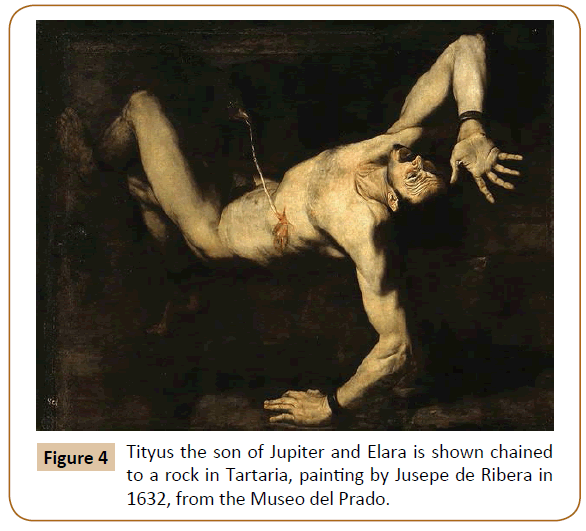
Figure 4: Tityus the son of Jupiter and Elara is shown chained to a rock in Tartaria, painting by Jusepe de Ribera in 1632, from the Museo del Prado.
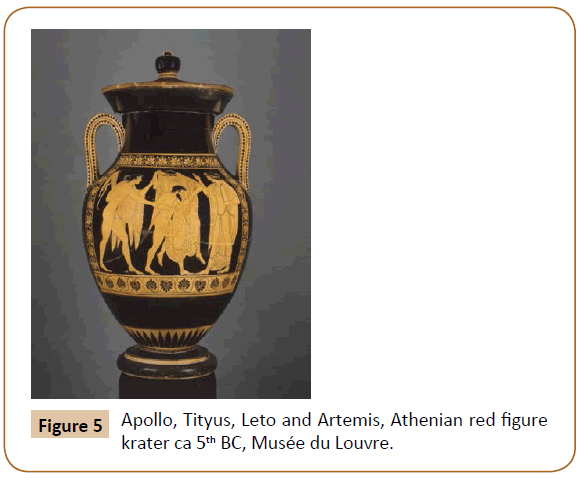
Figure 5: Apollo, Tityus, Leto and Artemis, Athenian red figure krater ca 5th BC, Musée du Louvre.
Hepatic surgery in ancient Greece
Unlike what many think ancient Greeks were operating abdomen and in some cases visceral organs in our case hepar. The books inside Hippocratic Collection present such cases of abdominal surgery, and demonstrate the knowledge on anaesthesia, antisepsis, tracheal intubation and apolinosis (Greek: απολίνωση) for a surgical operation to be accomplished [16].
Hippocrates and his pupils based upon the Hippocratic theory of the 4 humours, suggested that hepatitis could occur when "black bile fills the hepar, when someone consumes high portions of red beef meat and drinks too much wine, then liver’s bile is replaced by mucus (phlegm) and blood (disturbance of homeostasis) and black bile is poured inside hepar to cause hepatitis" [5]. The symptoms were also known, "light fever, headache, jaundice, cachexia, slurried urine, heamaturia, itc, faeces decolourization, whitened faeces in heavy disease [17]. According to the Hippocratic view, when a liver abscess was in present, the surgeon should perform cauterization, or simply an opening of the abscess through a small incision for the pus (black or yellow bile) to run out, or to perform a puncture (Greek: παρακÃŽÂÂÂντηση) without causing a damage to liver’s capsule (centuries later named as Glisson’s capsule). Similar was the approach for the ascetic fluid collection. The surgeon should immediately make an incision combined with repeated cautherization (for haemorrhage to be avoided), or targeted apolinosis (copper thread, or animal intestines), while simultaneously a passage was to be created for the fluid drainage (surgically, or through a metallic catheter). The surgeon should have been extremely cautious not to harm hypogastrium, peritoneum, or other visceral organs. Furthermore, the area of the incision was indicated. Thus the cut should have been made near the umbilicus region, or proximal to the last rib [16]. For the patient to undertake such surgical interventions, surprisingly Hippocratic medicine introduced the endotracheal intubation after anaesthesia, by using a thin stannum (tin) tube through the larynx, for the lung to attract "pneuma" (Greek: πνεÃÂÂÂÂÂÂÂμα, pneuma ≈ air = the vital force of the soul) [17,18].
Aretaeus thrived as an erudite physician in Alexandria, a pupil of the notorious Alexandrian school, known for the animal and human dissections and autopsies. Aretaeus, understood liver’s significant role on the body homeostasis by stating, "In healthy periods, liver arranges the feeding of the body, while in times of sickness has even greater power towards the restoration of the health, or towards the cause of death". According to his opinion, an abscess could usually cause a quicker and violent death of the patient, "acute pain occupies the body until the clavicle or the edge of the shoulder, as the diaphragm from which the liver is retained, is pulled downwards by the weight. The abscess is accompanied by high fever with chills. The cough is dry but not very frequent. The patient’s colour is light green, or white in the case of intensive jaundice. Sleep is without fantasies, the patient is sober. Swelling under the nipples may be deceivable and many could think that comes from the peritoneum. If however, is created under the rigged sides and is due to pressure, then the liver is swelled, as it is full of liquids. On the other hand, if the swelling is not lower than the last rib’s bone, then it is a symptom of the afflicted membrane (peritoneum). Shrinking of the flesh (marasmus), weak pulses, and dyspnoea that turn rapidly to be fatal complete the patient’s figure. If all the symptoms generally subside, the pus is discharged from the abdomen (hydropic patient, Greek: υδρωπικία)". He had recommended the opening, pointing out the risks of haemorrhage by using a "tricholabis" (Greek: τριχολαβίς) to remove skin’s hair. A small surgical wound with a scalpel was proposed, followed by a precise impingement of a "kauterion" (searing iron, Greek: καυτήριον), which both penetrates the abscess and cauterizes the area, sterilizing and preventing massive haemorrhage. If the patient was to live, a constant flow of white, viscous pus was to be expected (from the open wound? through a copper catheter?), thus resulting the survival of the sufferer. In the case of the pus distributed in the abdomen area, a sepsis was to be expected, accompanied with malodorous stools, rapid aggravation of the general status, cardiac failure (weak, hypokinetic pulse) and death [19].
Aretaeus had also observed the hepatic cancer. Hepatic hardening inside his works meant the macroscopic depiction of scirrhus (Greek: σκίρρος=a term for cancer in ancient Greek), was usually for him a latent ultimate result of the hepatic abscesses "the liver inflammation persists, and the pus remain inside the liver, the pain persists too, the enlargement turns to a rough area and transformed to elkos (Greek: ÃŽÂÂÂλκος, ulcer= cancer in ancient Greek)". Thus, it should have been removed in early stages, as soon as possible after the diagnosis, and the hepar had to be left to be "healed" (meaning probably liver’s regeneration). He had also observed the course of the disease, as well as its symptoms, "the patients, anorectic, dislike the sweet and preferably desire the bitter foods. They are pale, almost green, with chills, low temperature of the body, and swellings in the lumbar and feet areas. They finally die with wrinkled faces, dry abdominals, multiple diarrheas, weakness (marasmus, cachexia) and exhaustion". Although Aretaeus, had realized that ascites (Greek: ασκίτης) was the main complication of the hepatic cancer, he had wrongfully believed that it could be cured through a massive urination consisting of a thick and full of various impure sediments urine, or bleeding and/or strong and prolonged sweating [20].
Anaesthesia and strict local antisepsic protocols were to be applied by both physicians. Local antisepsis with clean boiled rain water, firewater, salt and/or hot sea water (hypertonic serum), copper, tar (contains carbolic acid), resin, perfumes (myrrha, cinnamomum, aloe) salvia, pinus, Cypressus sempervirens, with the patient under the effect of anaesthetics, such as Thessaly’s endemic plant mandrake (mandragoras), Morus alba and hedera could improve operation’s success and patient’s survivability. Anaesthesia and antisepsis were firstly implied by Hippocrates and were used in the same way by Aretaeus [16,19,21].
War surgery, dissections, autopsies, votive offerings and anatomy
Even if the simple hepatoscopy was unlikely to have revealed the truth of liver’s regeneration, war wounds could have provided some info. The Homeric epic poems and especially "Iliad", revealed a plethora of injuries and a series of various anatomical elements. Every ancient Greek army was followed by war surgeons and physicians, a concept that had been followed by the Roman army too. Almost all ancient Greek medico-philosophers, physicians and practitioners, were dissecting animals to unveil human’s body anatomy and physiology through the comparative anatomy as every dead corpse was a kind of a sacred body, not allowed to be toughed (disfigured) [22]. In some cases, in the war theatre, the dead warriors’ relatives lust for revenge, wished to eat their enemies’ hepar, as in the case of Hecuba (Greek: Εκάβη) who wished that she could eat Achilles’ hepar, in retaliation for the slaughter of her son Hector (Greek: Έκτορας).
Members of the Alexandrian school, like Herophilus of Chalkidona (ca 331-280 BC), and Erasistratus (ca 304-250 BC), felt less constrained by the Greek taboo against human dissection. They have both dissected hundreds of slaves and convicts to understand human anatomy and the function of the visceral organs. Herophilus was the first to accurate describe the hepar.
Furthermore, a series of terracotta and metallic figurines in antiquity were used for teaching purposes in philosophicalmedical schools, a common mainstream phenomenon in the era, serving as an auxiliary tool in order to facilitate medical study and in some cases divination for the future (Figure 6) [23,24].
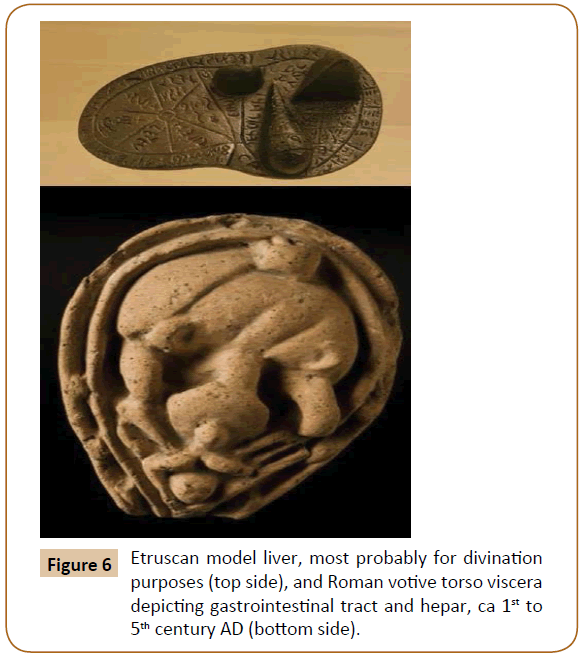
Figure 6 Etruscan model liver, most probably for divination purposes (top side), and Roman votive torso viscera depicting gastrointestinal tract and hepar, ca 1st to 5th century AD (bottom side).
Moreover, it was in vogue the custom of dedicating votive offerings (ex-votos) in ancient shrines inside god’s temples, especially in Asclepieia. This ceremony began in ancient Greece during the 3rd millennium BC in the island of Crete at the south of the Aegean Sea and spread all over the Hellenic dominion. A plethora of various dedications of votive offerings around the Asclepieia were found during excavations (Epidauros, Kos etch). The majority of these relics were manufactured as a normal display of a human member, or organ, while only a small number of them have had the characteristics of a specific disease or anomaly, presenting magnificent anatomical details, and it was inside the human body [25,26].
Discussion
Both Prometheus and Tityus depicted two tragic mythical creatures that were punished by the wrath of Zeus, and in both cases the centre of the retributive action of the carnivore birds was the liver. While in the myth of Prometheus the eagle was returning every day, in Titian myth the vultures were appearing every new moon, thus suggesting a period of 24 h to 28 days for liver’s regeneration [2].
Abdominal surgery and in particular hepatic surgical operations were being performed by important medical figures in ancient Greece. Meanwhile war surgeons had adequate knowledge on human’s anatomy, acquired by the treatment and observation of the wounded (Figure 7). We may assume that operations were performed into a certain depth for a massive bleeding to be avoided, but the fact that hepatic abscesses and malignancies were being operated and the patient had been enjoying a period of care, it seems that the healing, or even the growth (regeneration) of the hepar had been observed [16]. Alexandrian School though, may had gone a bit further as many scholars named its member as "butchers", who had been performing not only autopsies, but in many cases dissections even in alive human subjects [27].
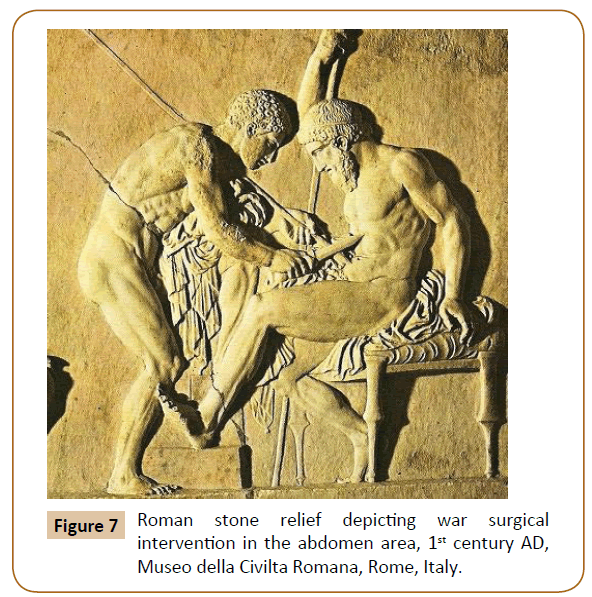
Figure 7: Roman stone relief depicting war surgical intervention in the abdomen area, 1st century AD, Museo della Civilta Romana, Rome, Italy.
Although in our research we have only mentioned the hepatic surgery performed by Hippocrates and Aretaeus, a plethora of ancient Greeks physicians were engaged in hepar’s study. Thus, Aristotle (ca 384-323 BC), Chrysippus (ca 279-206 BC), Erotianus (ca 1st century AD), Rufus of Ephesus (ca late 1st century), Archigenes (ca 1st-2nd century AD), Aelius Galenus (ca 129-216 AD), Oreibasius (ca late 4th century AD), and many others wrote various treatises on "De Natura Hominis" (On the nature of human anatomy and physiology), documenting their opinion about hepar [22].
In addition to all that, practically every medico-philosopher of the ancient Greece had been dissecting animals to understand anatomy and physiology. From Democritus (460-370 BC) (Figure 8) and Hippocrates to Aristotle and Gallen, all involved in comparative anatomy, even collecting skeletons, organ samples and most probably had been observing dying animals after experimental excisions of visceral organs [22,28].
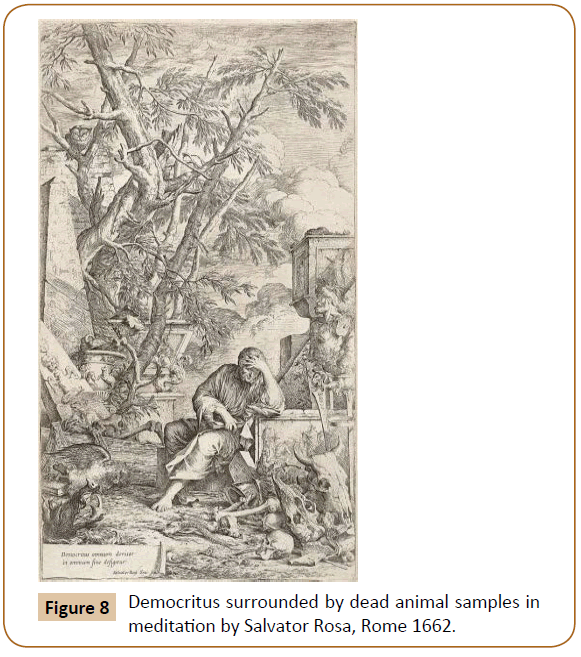
Figure 8: Democritus surrounded by dead animal samples in meditation by Salvator Rosa, Rome 1662.
Epilogue–verdict
Although it is a rather hard case to support that ancient Greeks knew about hepar’s ability, we believe that in a certain degree they did. All patients, travellers, and soldiers were treated either on the spot or inside Asclepieia, sometimes for a long period of time [29]. Hippocratic School established the thorough observation of the patients, systematizing and categorizing all known nosological entities of the era [21]. This principal soon became an axiom among ancient Greek physicians, forcing us to conclude that most probably they had realized or even saw hepar’s healing. In addition to all that, it is widely accepted that every myth depicts a certain degree of truth, and both our mythological stories had been focused upon hepar’s regeneration. Even so, our verdict could not be definitive, as no categorical reference had been made that an ancient Greek physician actually observed the phenomenon.
18506
References
- Tiniakos DG, Kandilis A, Geller SA (2010) Tityus: a forgotten myth of liver regeneration. J Hepatol 53: 357-361.
- Chen TS, Chen PS (1994) The myth of Prometheus and the liver. J R Soc Med 87: 754-755.
- Riva MA, Riva E, Spicci M, Strazzabosco M, Giovannini M, et al. (2011) "The city of Hepar": rituals, gastronomy, and politics at the origins of the modern names for the liver. J Hepatol 55: 1132-1136.
- Papoulas M, Douvetzemis S (2015) Ancient Greek Terminology in Hepatopancreatobiliary Anatomy and Surgery. Isr Med Assoc J 17: 467-469.
- Hippocrates (1851) Des afections internes livre VII, ed. É. Littré, Oeuvres complètes d’Hippocrate (vol. 7). Baillière, Paris.
- Aretaeus (1958) De causis et signis diuturnorum morborum (lib. 1) & De curatione diuturnorum morborum (lib. 1). In: Aretaeus HA (ed.) Akademie-Verlag, Berlin, A XIII, 1-8 & A XIII, pp: 1-2.
- Samothrakis A (1939) Hippocrates' anatomical knowledge. Greek Med 13: 732-745.
- von Staden H (1992) The discovery of the body: human dissection and its cultural contexts in ancient Greece. Yale J Biol Med 65: 223-241.
- Edelstein L, Temkin O, Temkin CL (1967) The History of Anatomy in Antiquity, Ancient Medicine: Selected Papers of Ludwig Edelstein.
- Malomo AO, Idowu OE, Osuagwu FC (2006) Lessons from History: Human Anatomy, from the Origin to the Renaissance. Int J Morphol 24: 99-104.
- Hesiod, Lombardo S, Lamberton R (1993) Works and Days and Theogony. Hackett Publishing, Cambridge, UK.
- Aeschylus R (2000) Prometheus Bound (Grene D, transl.). University of Chicago Press, Chicago 1942: 132-179.
- Power C, Rasko JE (2008) Whither prometheus' liver? Greek myth and the science of regeneration. Ann Int Med 149: 421-426.
- Crusius M (1901) Dictionary Homericon (trans. Pantazidou I.). Anastasios Feksis, Athens.
- Tsoucalas G, Sgantzos M, Androutsos G (2016) Hippocrates, Principles on Abdominal Surgery in Ancient Greece during the Fifth Century bc. Surg Innov 23: 212-213.
- Hippocrates (1849) De locis in homine & De morbis popularibus & De fistulis & De humidorum usu & De ulceribus & De medico & De affectionibus, Oeuvres complètes d’Hippocrate (vol 6). Baillière, Paris.
- Tsoucalas G, Sgantzos M (2016) Hippocrates, on the Infection of the Lower Respiratory Tract among the General Population in Ancient Greece. Gen Med (Los Angeles) 4: 1-5.
- Tsoucalas G, Sgantzos M (2016) Aretaeus of Cappadocia (Circa First Century bc or Fourth Century ad), Operating Hepatic Abscesses in Ancient Greece: A Reintroduction. Surg Innov 23: 427-428.
- Tsoucalas G, Sgantzos M (2016) Aretaeus of Cappadocia (ca 1st-3rd century AD): views on hepatic cancer. J BUON 21: 1326-1331.
- Anagnostakis A (2008) Antiseptic methods in ancient Greek physicians. Galen J 12: 186.
- Tsoukalas J (2004) Paediatrics from Homer until Nowadays. Science Press, Thessaloniki-Skopelos.
- Pournaropoulos GK (1930) The Teaching of Medicine in Greece. Asclepius 10: 1082-1083.
- Laios K, Tsoukalas G, Karamanou M, Androutsos G (2013) Anatomy and art. Ital J Anat Embryol 118: 263-266.
- Laios K, Tsoucalas G, Karamanou M, Androutsos G (2015) The medical-religious practice of votive offerings and the representation of a unique pathognomonic one inside the asclepieion of corinth. J Relig Health 54: 449-454.
- Bay NS, Bay BH (2010) Greek anatomist herophilus: the father of anatomy. Anat Cell Biol 43: 280-283.
- Tsoucalas G, Karamanou M, Kousoulis AA, Androutsos G (2012) Democritus (460-370 BC) on embryology, anatomy and pediatrics: the unknown aspects of the Greek atomic scientist. Ital J Anat Embryol 117: 199-204.
- Tsoucalas G, Karamanou M, Laios K, Sgantzos M, Androutsos G, et al. (2016) The Forgotten Asclepieion of Peparithos and the Islander Worshippers of the Snake God. J Relig Health 55: 43-49.













